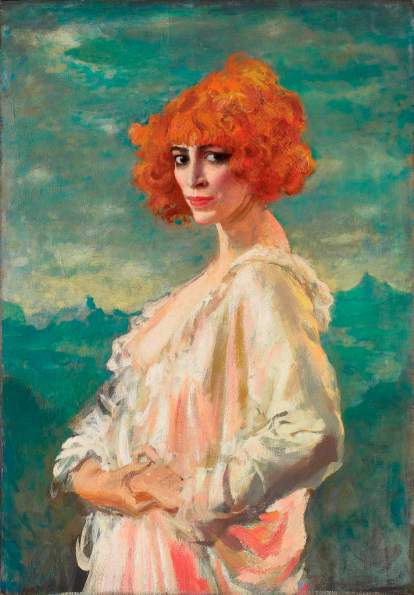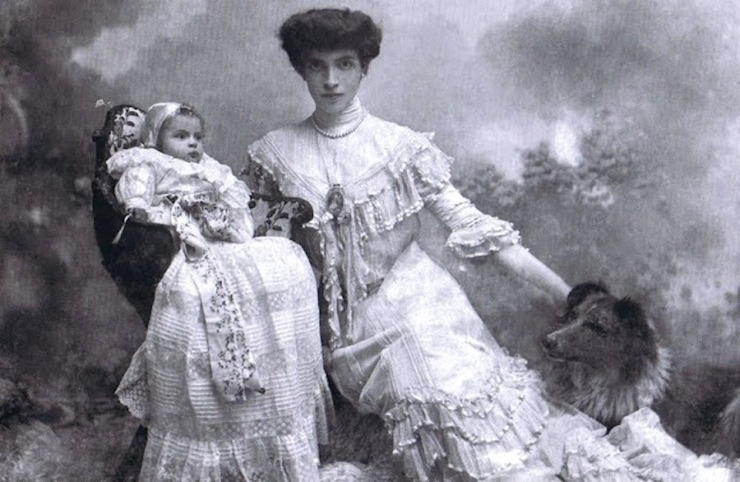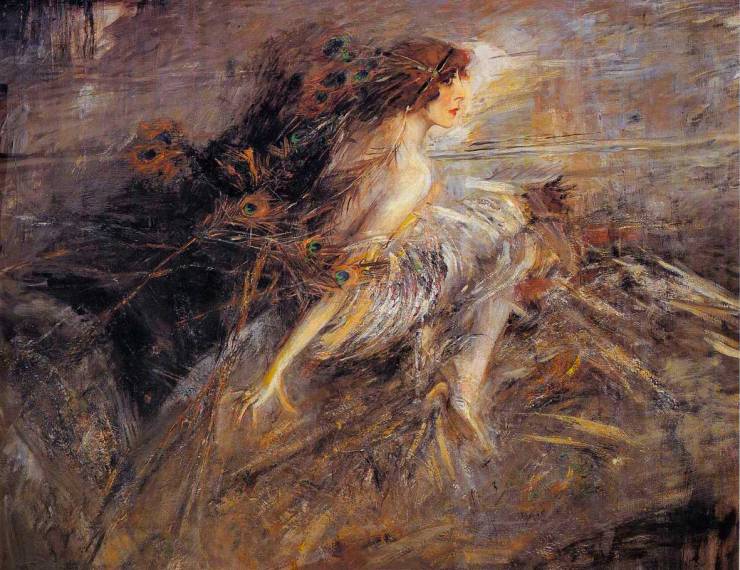Age cannot wither her, nor custom stale her infinite variety
[W. Shakespeare, Antony and Cleopatra, Act II Scene II ]
In my life, I sometimes believe in coincidences. There are some incidents that do happen for a reason. Or at least, we make them happen for a precise reason.
My second home, Toronto welcomed many moons ago and still houses the portrait of a fiery-haired lady who spellbinds every beholder with her piercing gaze. Her name was Luisa Casati Stampa di Soncino, née Amman, but she was hailed as the Divine Marquise, la Divina Marchesa, by Italian author Gabriele D’Annunzio.

In the 20th century many people made Venezia their home, Italians and foreigners. One of the most famous and eclectic figures is undoubtedly that of Luisa, young and beguiling heiress from Milan, born to a rich bourgeois family who married into Lombardy aristocracy. With her ivory-pale complexion, singularly tall (nearly six feet) and skinny, Luisa was certainly not a standard female beauty, but she found ways to make herself illustrious and celebrated in any case.
At a very early age, she became interested in the life of people like Ludwig II of Bavaria, Empress Elisabeth of Austria, Sarah Bernhardt, Cristina Trivulzio Princess di Belgiojoso and Virginia Oldoini, Countess of Castiglione. Given their parents’ premature death, Luisa and her elder sister Francesca soon found themselves to be some of the wealthiest heiresses in Europe.
In 1900, Luisa married the Milanese Marquis Camillo Casati Stampa di Soncino, hence she became the Marquise Casati.

Luisa’s guiding principle was that life was to imitate art and art imitate (her own) life. By promoting and sponsoring the work of emerging and modern artists, she was immortalized by – to name a few – Giovanni Boldini, Augustus John, Kees Van Dongen, Romaine Brooks and Ignacio Zuloaga; sketched by Drian, Alberto Martini and Alastair; sculpted by Giacomo Balla, Catherine Barjansky and Jacob Epstein; and photographed by Man Ray, Cecil Beaton and Baron Adolph de Meyer.

Thanks to her father’s fortune, the Divina Marchesa could afford a gilded life, journeying around the Italian peninsula (Roma, Firenze, Venezia, Capri), throwing memorable parties, collecting exotic animals while squandering fortunes however her whim dictated.
Greenhouse flowers, cocaine, Nubian naked servants gilded in gold leaf, opium, diamonds, furs and eclectic mansions represent some of Luisa’s many pleasures. Needless to say, every party was carefully planned to outdo the previous one.
In 1910 she bought the then abandoned Palazzo Venier dei Leoni in Venice.
Luisa made this palace with a large garden and a balcony facing the Canal Grande her residence and the stage to her extravagant parties until 1924. In the garden, Luisa welcomed and raised albino crows, peacocks and cheetahs.
Wrapped in a silk velvet robe, wearing mother-of-pearl heels and little else, you could have easily spotted her prowling Venice with her cheetahs after the sunset.

Some twenty years later, after Luisa’s glorious days, Palazzo Venier dei Leoni was to pass into the hands of a young American woman, who wanted to flee her uncle’s oversight. She bought the palace on the Canal Grande, restored it and made it home for herself and her vast collection of artworks. Her father had decided to die during the maiden voyage of an ill-fated, legendary ship, the Titanic. That woman’s name was Peggy Guggenheim.
For a brief period only, between 1919 and 1920, Luisa Casati moved to Capri where she resided at the Villa San Michele, becoming the tenant of a reluctant Axel Munthe, a Swedish doctor.
In 1923 Luisa decided to move to Paris and bought a house there, the Palais Rose, which she used to call the Palais du Rêve, a chateau on the outskirts of Paris that belonged to Count Robert de Montesquiou, the ultimate dandy.

By 1930, the Marchesa had accumulated a debt of 25 million dollars given her incredible lifestyle. Unable to honour her debts, she was forced to sell her Parisian palace and all its contents were auctioned. Among the buyers there was a young fashion designer, Coco Chanel.
From Paris Luisa had to flee to London, where her daughter Cristina lived.
In 1957 the Divina Marchesa died literally penniless and was buried in Brompton Cemetery.
On her tombstone, her granddaughter, Lady Moorea Black, had these lines engraved: “Age cannot wither her, nor custom stale her infinite variety,” the best way to commemorate the life of her extravagant and augustan ancestor.

* * *
Palazzo Fortuny in Venice housed an exhibition devoted to the Divina Marchesa: “La Divina Marchesa. Arte e vita di Luisa Casati dalla Belle Époque agli anni folli (October 4, 2014 – March 8, 2015).” Here you can find a video from the exhibition held in Venice.





wow that Giovanni Boldini pianting is gorgeous _____________ Lindsay C. Sidders Ph.D Candidate Department of History University of Toronto Toronto, Ontario Canada Mobile: 4168840983 lindsay.sidders@mail.utoronto.ca
On Fri, Mar 8, 2019 at 9:13 AM A Venetian in Toronto wrote:
> Sebastiano posted: “Age cannot wither her, nor custom stale her infinite > variety [W. Shakespeare, Antony and Cleopatra, Act II Scene II ] In my > life, I sometimes believe in coincidences. There are some incidents that do > happen for a reason. Or at least, we make them happen f” >
LikeLike
It is indeed – Luisa must have been an overwhelming woman!
LikeLike